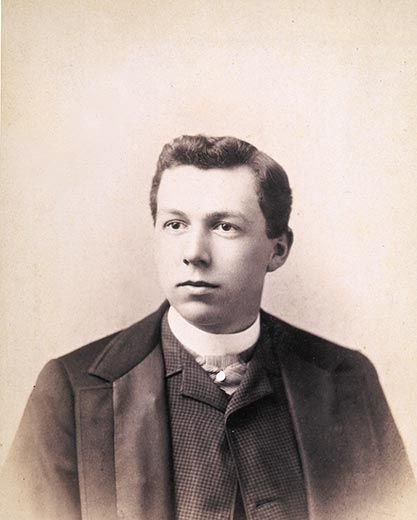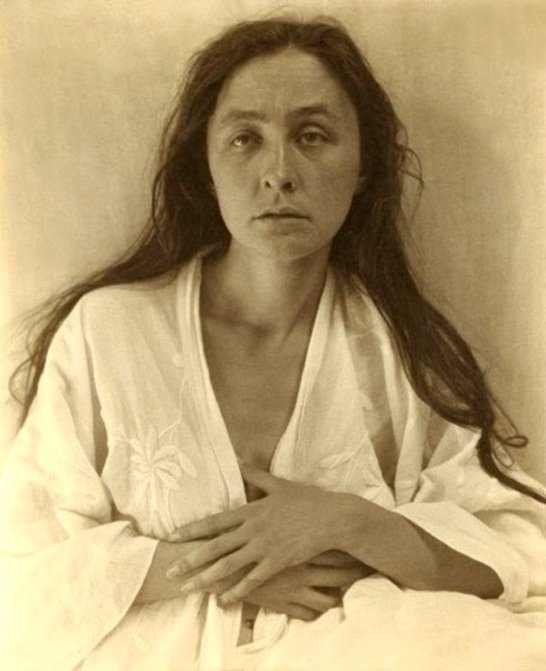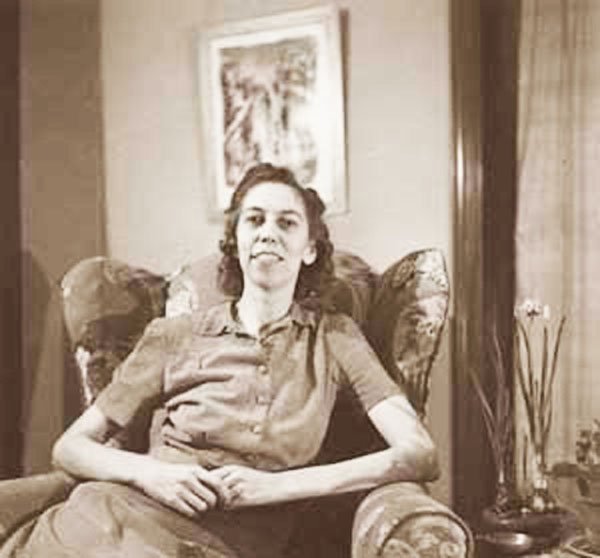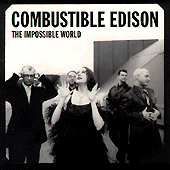WRITING by Andy Miles
In 2023, I launched a quartet of decade-exhuming programs under the name “From Studio C.” For each show I wrote the following essays:
WHY A SHOW ABOUT THE THIRTIES AND FORTIES?
WHY A SHOW ABOUT THE FIFTIES?
WHY A SHOW ABOUT THE SIXTIES?
WHY A SHOW ABOUT THE SEVENTIES?
In 2022, I edited/co-authored about thirty of the biographical entries in my dad’s book, The Music That Defined A Century, twenty of which appear on this page.
Synopsis: Twentieth century America was shaped as much by its music as anything else. Starting with the African-American influence of ragtime and blues, music morphed into gospel, jazz, swing, bebop, and rhythm & blues. From these genres came rock ‘n’ roll, leading to the distinctive sounds of today’s rap and hip hop.
Michael Frank Miles’ The Music That Defined A Century contains biographical profiles of seventy-five of the most revered singers, instrumentalists, and songwriters of the twentieth century.
In 2021, Eckhartz Press published Perspectives in Black and White: A Concise History of Evanston’s Struggle to Rid Itself of Segregation and Racism, the book I co-authored with my father, Michael Frank Miles.
Perspectives in Black and White explores the events that shaped the contemporary racial makeup of a large, representative, and integrated Northern suburban community—Evanston, Illinois.
The story touches on a hundred years of Evanston’s history with the focus centering on the impact of two U.S. Supreme Court decisions—Plessy v. Ferguson (1896) and Brown v. Topeka Board of Education (1954)—and shows how a city, and nation, grasped the significance of these two decisions; the first gave legal sanction to segregation, the second nullified it in the public schools. The establishment and, decades later, the dismantling of segregation carries through several generations and reflects attitudes that were common in their time. The impact that national events had upon Evanston is drawn from three catalysts who brought about change—one a national figure, Martin Luther King Jr., and two prominent local leaders, Edwin Jourdain and Gregory Coffin.
(The Looking For Love Part), an audio documentary (2005)
In 1998, the author Jennifer Beth Cohen embarked on a fateful adventure, seeking love and livelihood in Moscow. She found both, if only fleetingly. What transpired over the course of a year would become the agonizing substance of her first book, the coming-of-age memoir Lying Together: My Russian Affair.
Cohen, a native New Yorker, returned to Manhattan in 1999 where she immersed herself in the painstaking work of recounting her personal and professional saga in the pages of a tell-all memoir. Terrace Books, an imprint of the University of Wisconsin Press, published the book in 2004.
On the eve of Lying Together’s commercial release last September, sound producer Andy Miles had a chance meeting with the author in a Washington, D.C. bookstore. He quickly recognized — in both the book and its first-time-published author — the compelling stuff of documentary and went to work on what would become (the looking for love part).
As a production assistant with Wisconsin Public Television I worked on the website wisconsinvote.org during the 2000 and 2002 election cycles. When the 2004 election came around I had left that job and and was living and working in Washington, D.C., but I persuaded my former boss to take me on as a freelance writer, ultimately providing a candidate profile for all Wisconsin Democratic, Republican, Independent, Green, Libertarian and Constitution Party candidates in that year’s federal elections. In the process I conducted interviews with most of the candidates, including several incumbents (Representatives Baldwin, Green, Kind, Petri) in their Washington, D.C. offices. The general election candidate profiles and election overviews appear below (primary election profiles and overviews have not been included here), along with a transcript of my interview with Rep. Baldwin and a feature on third-party politics.
“Toronto: City in Transition,” an audio documentary (2003)
“Toronto: City in Transition” is an award-winning audio documentary that examines numerous public policy issues in an effort to (1) portray the city’s visible decline during the past 10 to 15 years, (2) determine the causes of that decline, (3) survey proposed remedies to combat that decline.
From there, the documentary chronicles the changing racial/ethnic complexion of the city and Toronto’s rapidly growing population, exploring the ways in which these issues relate – whether in fact or only senseless reaction – to the decline.
Andy Miles traveled to Toronto in early September 2002, staying in the Beaches neighborhood over a 10-day period. He interviewed numerous scholars, journalists, a best-selling author, municipal politicians, city planners, and the proverbial man and woman on the street. Returning home in mid-September, he recorded several more interviews by telephone from the production studios of WLUW-Chicago and WORT-Madison.
Dee Dee Bridgewater, the incomparably versatile jazz vocalist and sometime stage actress who headlines this year’s Isthmus Jazz Festival, is preparing to close another chapter in the ever-evolving narrative of her 30-year career.
Having spent 15 painstaking years performing jazz and popular standards immortalized by icons of bygone eras — vocalists Ella Fitzgerald, Sarah Vaughn and Betty Carter, pianist/composer Horace Silver — the 52-year-old Bridgewater has had enough.
“I’m leaving all these standards,” she declared buoyantly in a recent phone interview, from her home in Henderson, Nevada. “I’ve been singing standards for 15 years nonstop and I’ve had it. I need to do something that is musically challenging for me. I want to leave all these standards to all of these young jazz singers and go on and do something else.”
As a 14-year-old boy living in Czechoslovakia, Gerry Friedenfeld was sent by his parents from Prague to England on the “Kindertransport,” the clandestine deportation of more than 10,000 Jewish children out of Nazi-held lands. In 1950, Friedenfeld emigrated to the United States, eventually settling in Milwaukee.
Since April he’s been a docent at the Milwaukee Public Museum, greeting and talking with thousands of children who have visited “Remember the Children: Daniel’s Story,” a special exhibition now open at the Milwaukee Public Museum.
A traveling exhibit created by the United States Holocaust Memorial Museum in Washington, D.C., “Daniel’s Story” presents the Holocaust without use of graphic imagery. “The whole point is to introduce the moral issue without frightening people,” Sensiba explains. “The exhibit is meant to introduce the dilemmas of the Holocaust without looking at graphic physical reproductions and focusing on mounds of bodies.”
Richard Rodgers, born in New York City 100 years ago, stands as America’s preeminent composer of Broadway musicals. Collaborating first with Lorenz Hart and then with Oscar Hammerstein II, Rodgers’ career in the theater spanned six decades and saw the production of some 40 Broadway musicals. The list of Rodgers’ standards — “Isn’t It Romantic,” “Thou Swell,” “Where or When,” “I Could Write A Book,” “Some Enchanted Evening,” “My Favorite Things” — is a durable testament to his remarkable gifts as a composer.
“I remember every Richard Rodgers song I ever heard,” says Rodgers biographer Meryle Secrest.
Something of a teenage prodigy, Rodgers had his first song published at age 15. After completing the score for his first full-length Broadway musical, the 17-year-old composer blithely departed for summer camp to work as a counselor. Despite these early successes, Rodgers contemplated leaving the theater before his 23rd birthday, calling the winter of 1924-25 “the most miserable period” of his life. “I was twenty-two and it all seemed to be falling apart,” Rodgers remembered. He even contemplated leaving the theater for a $50-a-week position selling babies’ underwear.
“South Vietnam 1966: War Within A War,” published in the journal Archive, May 2002
Preface
In March 1966 an internecine conflict erupted in South Vietnam that plunged America’s vulnerable ally into a state of “de facto anarchy.” The Saigon monk Ho Giac issued a dire, nearly delirious prediction: “If [the situation] continues, Vietnam will come to a tragic end, and we lose the country and everybody will become a slave and we don’t want to be slaves.”
Ironically, the statement was issued on March 16, less than a week after the crisis began and more than two weeks before South Vietnam’s prime minister, Nguyen Cao Ky, dispatched government forces to Danang to smash the rebellion. Belatedly concluding that he was confronted with “a political problem” that “must be solved by political means and not by force,” Ky ordered a retreat and subsequently conceded the Buddhist-led opposition virtually all of its demands. These measures failing to defuse a highly volatile situation, Ky again resorted to force, releasing the considerable (U.S.-subsidized) wrath of loyal government forces on dissident civilians and soldiers, first in Danang and then in Hue, where Buddhists had recommenced the galvanizing and polarizing practice of self-immolation.
In considering Clinic, the art-punk four-piece from Liverpool, England, one conclusion is certain: the band has generated the giddy interest and frenzied anticipation that bear the markings of hype. Next-big-thing hype. The kind of hype conferred on quartets from Liverpool who tour with Radiohead.
But Clinic hasn’t quite broken through yet — not with the unqualified fervor that characterizes Radiohead’s success, at least. And with its new long-player, Walking With Thee, that breakthrough may be somewhat less than momentous.
It’s not that Walking falters on a creative level; in many ways, it improves on the band’s full-length debut, last year’s Internal Wrangler. With less clutter and far less clatter, Walking explores a different, darker tonal register than its predecessor.
“Ambitious undertakings at the Esquire,” The Daily Cardinal
Eugene Ionesco’s The Chairs, playing through this weekend at the Esquire Theater, 113 E. Mifflin St., is an ambitious undertaking. The result is only the narrowest success.
The story concerns a senescent couple, married — though ensuing information seems to contradict this point — for 75 years. The Old Man, 95 years old, has lived a life whose unfulfilled promise is his wife’s preoccupation. He is little more than a child, seeking solace in her lap, weeping and calling for his “mamma.” Yet he considers his failure simply the consequence of miscommunication, having found neither the appropriate audience nor the appropriate words to convey his universal message. So finally he engages the services of a professional orator and invites a veritable swarm of imaginary guests — “all the owners and all the intellectuals,” “the papacy, the papayas and the papers” — to hear his message.
Les Savy Fav, Brooklyn-based new wave-rock heroes (or so the group’s Web site claims), arrives in Madison Friday, headlining at The Catacombs Coffee House, 731 State St.
The seventh live date of a recently launched U.S. tour, Les Savy Fav has toured almost continuously in support of its third full-length disc, the exquisite and incendiary Go Forth.
“We’ve been touring for the past four months, pretty much straight,” bassist Syd Butler said in a recent interview. “I think that helps generate a lot of buzz. I think a lot of bands play one or two times a year and it really doesn’t do anything. Most of the successful bands that we know of toured for five or six years straight.”
The FDR Tapes, unpublished school paper, spring 2002
Magnetic tape recording devices were not yet perfected when, in 1940, Franklin Roosevelt had an experimental sound recording machine installed in the White House. The machine, the “Kiel Sound Recorder and Reporter,” developed by and named after the inventor J. Ripley Kiel, used, according to historian William Doyle, “a recording needle to feed signals onto ribbons of [35 mm] motion-picture sound film.” Kiel had licensed the prototype to RCA.
When White House stenographer Henry Kannee approached the company in 1940 with a request for a recording device, RCA founder David Sarnoff donated the “three-and-a-half foot-high contraption” in June of that year. Kiel installed the recording device in the room directly below the Oval Office – “a padlocked chamber” in Doyle’s words – and ran a wire from the machine to a microphone planted in Roosevelt’s desk lamp and another into the Oval Office phone line.
It’s the ultimate bad-dream scenario: Bob Mould “grows up,” discards the electric for the electronic. Only Bob Mould’s been around long enough to have already “grown up,” shelving the post-punk pique of Hüsker Dü for the more pensive pose that informed Workbook, his first solo effort.
But while the promise of that cello-saturated digression has largely gone unrealized, Mould’s latest detour has, with Modulate, only reared its ambivalent head. Mould will release three full-length discs this year, the second of which will be entirely electronic. Modulate is something of a compromise: while it trades heavily in loops and grooves, it offers enough old Mould to not alienate the 41-year-old singer/songwriter’s entire fan base.
With the death of author Eudora Welty last week at age 92, much was made of her long years in Jackson, Mississippi. Little, by comparison, was made of her time in Madison (obituaries published in the Wisconsin State Journal and Capital Times made almost no mention of it). And little should have been made. “That Eudora left such a small footprint at Wisconsin is remarkable, and is perhaps [an] indication of deep depression,” her biographer, Ann Waldron, writes. Yet Welty’s time here proved in other ways formative and exhilarating.
After two bustling years at Mississippi State College for Women (now Mississippi University for Women), Welty, anxious to leave Mississippi, transferred to the University of Wisconsin-Madison in 1927. It was her second choice. Welty would later recall: “I was sent to the Middle West. I was very timid and shy, younger than the rest, and those people there seemed to me like sticks of flint, that live in the icy world.”
More than 80 years after the Russian Revolution of October 1917, John Reed’s Ten Days That Shook the World holds up in large part because of the on-the-scene reportorial virtues of its narrative. Reed, the “golden boy” journalist whose firsthand account of the Mexican Revolution had won him the accolades of his journalist brethren, particularly among writers possessed of his own radical-activist-Bohemian proclivities, arrived in Petrograd in late August 1917, “predisposed to witness a miracle.”
By then the scene in Russia was one of chaos and transition, a country impaired by three years of war that the “war-weary” Russian army was increasingly indisposed to fight (a mid-June offensive had resulted in the ominous spectacle of hundreds of Russian soldiers fleeing the Germans); an unrelenting wave of Bolshevik-inspired demonstrations and riots, most recently the abortive “July Days” adventure which sent party leaders into temporary exile; and the effete, ineffectual inheritance of the February Revolution – the Provisional Government.
“Resort 76 and the Holocaust Theme in Drama,” unpublished excerpt from class journal, spring 2001
Rigorous in its pursuit of realism and verisimilitude, the Holocaust stage drama Resort 76 somehow comes off unreal and contrived. It left me asking many questions about the Holocaust theme in drama, questions that offered no simple answers.
First question: Is the Holocaust theme so politically charged that these characters can only make the “right” decisions in the end? If so, does that restrict the narrative options? Is this a quality inherent to Holocaust drama? Is it a condition of Holocaust drama?
“Reflections on ‘Triumph of the Will’ and 'The Eternal Jew’,” unpublished excerpt from class journal, spring 2001
Leni Riefenstahl’s Triumph of the Will is a film, but, as importantly, it is a piece of dramatic staging. Triumph of the Will is also a devastating instrument of historical knowledge.
To begin, the staged quality of Triumph of the Will is revealing in what it tells us about the Nazi program and its influence over 1930s German society, in terms of its scope, ambition and resources. That Nazi party leadership produced a film of this magnitude — four hours in length with a determined, overarching aesthetic, and a technical command on par with the best filmmaking of the time — speaks forcefully to these issues.
Hitler himself appears comparatively little in the film, a fact very likely attributable to the astuteness of his much commented on, and much lamented, showmanship. The Fascist leadership in aggregate, however, claims many inches of film. But every Fascist who declaims on the dais, is tempered, it seems, by more politically innocuous counter-imagery.
In 1965 the Danish director Carl-Theodore Dreyer said this about his most recent film, Gertrud: “I seek before all else, and in all cases, to work in such a way that what I must express becomes cinema. For me, Gertrud is no longer theater at all, it has become a film.”
Ironically, the director’s comments stood in stark contrast to critical evaluations of the film. Stanley Kauffman, writing in The New York Times, called Gertrud “the least fluently cinematic of any work of his that I know,” while Dwight McDonald leveled a much harsher critique of the film; writing in Esquire, McDonald charged Dreyer with descending “into cinematic poverty and straightforward tedium. He just sets up his camera and photographs people talking to each other, usually sitting down; just the way it used to be done before Griffith made a few technical innovations.”
In a 1998 New York Times article, Phillip Lopate examined a trend in recent French filmmaking that has been identified as a new French New Wave. Two young directors, Arnaud Desplechin and Gaspar Nöe, offer evidence that a potent new trend, whatever one labels it, has emerged in French cinema. Both directors have installed in their first films a definable authorial signature predicated on inventive formal and narrative strategies. Both directors rebuff objective realism for a more personalized — and stylized — mode of expression. But Desplechin and Nöe, joined under this press-concocted rubric, represent plainly dichotomous strands of the trend.
Desplechin is praised by Lopate as “perhaps the most gifted” of the new New Wave directors and typifies the strand of young auteurs that “consists of Parisian, largely Jewish, intellectuals making realistic, urbane, analytical films about the lives of graduate students, wannabe writers, and professionals.” Both Desplechin’s 1992 feature debut, La Sentinelle, and his 1996 follow-up, Comment je me suis dispute … (Ma vie sexuelle), fit neatly into Lopate’s generalized description. The second of these, named by Lopate as “so far the masterpiece of the new New Wave,” is the more considerable of the two and better serves an argument for the director’s auteurist credentials.
In evaluating Marcel Carné’s Les Enfants du paradis, one cannot, by adopting even an expansive appraisal of the work, precisely term the film “realist.” In fact, to make any cursory appraisal in regard to the film’s realism would likely produce assertions of its very lack of realism, while a more thoroughgoing approach to the film would, with diminished categorical fervor, still vindicate those initial assumptions.
Released in 1945 with the onset of Liberation, though made entirely in the shadow of the Occupation, Les Enfants du paradis owes many of its formal and narrative strategies to the period of French filmmaking to which it belongs, a period that had made a decided turn away from realism, at least in any overt sense. Furthermore, the basis of any argument that the film negotiates an essential realism — an argument reasonably predicated on the film’s depiction of historic or “real” events, the authenticity of the sets, the milieu of its characters, and the naturalism of its performances — is vulnerable to refutation as each one of those components has its foil, which, in conjunction, expose the claim to the film’s realism as deficient.
Zola’s ambition upon arriving in Paris in 1858 at the age of 18 was to be a Romantic poet, in the style of Victor Hugo, whom he revered. But Zola fell under the influence of many of the new forces that were coming to define 19th century. A realistic technique was evolving in literature, a technique that placed at its center observations of human life and the concerns of contemporary life. Dr. Claude Bernard’s Introduction to the Study of Experimental Medicine (1865) produced another critical shift in Zola’s orientation toward the natural world and motivated the young writer to “replace the novel of pure imagination [with] novels of observation and experiment.” Zola made good on the promise and took up the naturalist cause not only in fiction but in art and the theater, writing his first naturalist play in 1865. But it would be another seven years before Zola would have a play produced. That play was Therese Raquin.
The preface to Therese Raquin finds Zola struggling with the process of translating a literary text to the theatrical idiom. Zola concedes that in adapting his first major novel he is not only violating his own creed but is undertaking the additionally perilous task of adapting to the stage a novel that was first greeted with hostility. In fact, there was such severity in the critical response that Zola had taken it as a sort of perverse challenge. The critics, Zola recalls, “dragged [the book] gaily through the gutter and declared that if such vileness were to be paraded on the stage, the hissing of the audience would extinguish the footlights. I am, by nature, extremely curious.”
Late in Francois Truffaut’s Jules et Jim, (showing through Thursday at the Majestic Theater), Jim, a writer having an open affair with his best friend’s wife, waxes philosophical, commenting: “New laws are beautiful, but it’s more practical to obey old ones.” The remark seems to echo the famous statement offered by Italian director Michelangelo Antonioni on the occasion of the world premier of his breakthrough film, L'Avventura. Society, Antonioni argued, was “under the sway of moral forces and myths” which “cannot exactly be called old and outmoded but rather unsuited and inadequate.”
Films were exploring radical new terrain in 1960 and directors like Antonioni and Truffaut were not simply asserting their creative freedom behind the camera and in the editing lab. L'Avventura and Jules et Jim are breakthroughs in terms of sexual ambivalence and psychological ambiguity.
“Wit” performance review, The Daily Cardinal, September 2000
Following shortly after the Rep’s facile season opener, the musical I Love You, You’re Perfect, Now Change, Wit comes as a dramatically bold, unsettling, often excruciating rebuttal to its predecessor. It is also a provocative reminder of what live theater can offer in terms of narrative clarity, fierce characterization and rigorous authenticity.
Neither based on fact nor very likely to be filed under “disease of the week” fiction, Wit blends conventions of both those popular formulas, for better and for worse.
Vivian Bearing, Ph.D. (Lori Larsen) is routinely informed by her doctor that she has stage four ovarian cancer. There is no “stage five,” Professor Bearing grimly quips. Having devoted her life to the pursuit of knowledge — she is a scholar of John Donne’s 17th-century metaphysical poetry — she is receptive to the doctor’s suggestion that she undergo an experimental chemotherapeutic therapy, knowing she has little hope for survival. Dr. Kelekian (Paul Boesing) rarely surfaces again, making way for a bustling team of anonymous lab technicians and a detached automaton of a research fellow, Dr. Jason Posner (David Quicksall).
“What is the allure of Rent?” The Daily Cardinal, April 2000
In bringing Rent to Madison (April 18-23), Fred Frank, president of Frank Productions, says the most obvious attraction for the touring company to stop here is the UW campus. Were the show not calculating in its appeal to youthful audiences — and its alienation of segments of the traditional Broadway crowd — such a statement, especially in light of recent turnouts for musicals in Madison, would be dubious to say the least.
Rent brings to the stage the gritty issues of drug addiction, gay and lesbian sex, AIDS and S & M dancing with an abundance of four-letter words. That these elements so conspicuously place Rent in the vanguard of contemporary musical theater says more about the irrelevance of the Broadway stage as a vehicle for expressing contemporary themes than it does about the presumed audacity of the production.
“A hot ticket: ‘Rent’ promises to be the biggest, boldest musical to hit Madison. And the story behind it is nearly as fascinating as the show itself,” Madison magazine, April 2000
Four years old, Rent still carries with it a backstage melodrama as compelling as the one that unfolds on-stage. The show struck Broadway gold in 1996, winning the Pulitzer Prize for Drama and the Tony® Award for Best Musical. But the road there was paved with the vicissitudes reflected in the play — and ultimately tragedy.
Playwright-composer Jonathan Larson was denied the opportunity to ever see his spirited production mounted before an audience, adoring or otherwise. In the final week of his life, Larson, a longtime resident of Manhattan’s East Village, where the musical is set, made two visits to the emergency room. Doctors dismissed any serious concern, offering such glib diagnoses as pre-show jitters and food poisoning. As he prepared a kettle of tea on the evening of January 25, 1996, only hours after the show’s final dress rehearsal, Larson dropped to the floor, the victim of an aortic aneurysm.
“A Little Night Music” performance review, The Daily Cardinal, April 2000
It’s ironic that Stephen Sondheim, one of Broadway’s most routinely honored names, remains something of a dark figure. His name is known to many, and the titles with which he’s connected — West Side Story, Gypsy, A Funny Thing Happened on the Way to the Forum, Company, Follies, Sunday in the Park with George, Sweeney Todd — are musicals of imposing significance, artistically if not always commercially. His 1973 effort, A Little Night Music, being presented through Sunday as a joint production of University Opera and University Theatre at the Wisconsin Union Theater, is one of the composer’s most undiluted commercial successes. It won Sondheim a record-breaking fourth consecutive Tony® Award for Best Score and was nominated for 11 others, including Best Musical (which it also won).
Yet it figures obscurely in the public’s consciousness of musical theater. This fate may have to do with the time in which the show was conceived, a period that finds the musical form in eclipse. It may also be that Sondheim has rarely pandered to his audience, affecting a pose, in musical terms, too aloof and enigmatic to speak to the basic whims of the Broadway audience.
“1776” performance review, The Daily Cardinal, March 2000
Judging by the audience that came out to see 1776, the famed Broadway musical that arrived in Madison Wednesday night, this review would seem to hold little interest for readers of this paper. The large crowd of middle-aged, middle-classed spectators seemed far removed from the UW campus just a few blocks away.
It could be the prohibitive cost of a Civic Center ticket, which, in fairness, reflects the high price of staging an extravagant production like 1776, and is considerably less cost-prohibitive than a ticket to the same show in, say, New York.
It could be the feeble attempt generally made by the Civic Center to reach college students, whether you judge this by the relentlessly tepid fare the Center presents, or the demographic targets of its marketing campaign and sponsors.
It could be that the college-aged are simply uninterested in the quaint artifice of the Broadway extravaganza, though a quick harkening back to recent university productions like Guys and Dolls confuses the argument.
“Gross Indecency / Sweeney Todd” performance review, The Daily Cardinal, March 2000
“It’s not that Oscar Wilde is finally catching up with us,” says playwright Moises Kaufmann, “it’s that we’re finally catching up with him.”
Kaufmann’s play, Gross Indecency: The Three Trials of Oscar Wilde (running through April 2 at the Madison Repertory Theater, 122 State Street), makes this point painfully clear, weaving Wilde’s own words — collected from trial transcripts, his literary and dramatic works, letters and poems — around the inimical, often hypocritical mores of Victorian England. This provides the central tension of Kaufmann’s play: a systematic filtering and juxtaposing of Wilde’s rarified language and artistic precepts through and against the austere social climate of the period.
The “Trial of the Century,” as one newspaper reported it, was not one from our own century (the 20th, if one interprets the calendar correctly); but it very well could have been.
At age 81, German-born actress Uta Hagen has been in the theater most of her life, starring on- and off-Broadway and operating a famous acting studio for the better half of a century. She was Blanche in A Street Car Named Desire, Georgie in The Country Girl, and Martha in Who’s Afraid of Virginia Woolf? — roles that won her screen counterparts Best Actress Oscars (Hagen herself didn’t appear in a Hollywood film until 1972). The New York studio founded by her second husband, the late Herbert Berghof, has long been the setting for perhaps her greatest role, as teacher of a cast of thousands, young actors with names now more famous than her own: Jack Lemon, Jason Robards, Geraldine Page, Lily Tomlin, and Matthew Broderick.
Hagen first cultivated her own dramatic skills behind the footlights of Bascom Theater, appearing in productions of the long-defunct University of Wisconsin High School, and in summer stock productions of the Wisconsin Players. She left Madison in 1937, after only one semester at the UW, and quickly ensconced herself on stages large and small, appearing in almost a dozen shows before she turned 20.
It would be useless to resist placing a new Woody Allen film in the context of his older films. It would also be meaningless. Allen’s films are so personal and so often divorced from current trends that this becomes the only practical context for placing his annual expositions.
So to begin, Sweet and Lowdown, his last effort of the ‘90s, a decade fraught for Allen with rumor, infamy, professional uneasiness and artistic insolvency, is one of the director’s finer outings. Where recent efforts were alternately undermined and abetted by self-consciousness — the arty black-and-white New Wave reverence of Celebrity, his sleazy courtship of the R-rating in Deconstructing Harry and Mighty Aphrodite — Sweet and Lowdown is a return to form epitomized by wistful throwbacks Radio Days and The Purple Rose of Cairo.
Magnolia is another Hollywood film parading a band of flawed characters who nonetheless emerge as absorbing and (somewhat) sympathetic. A nimbly rendered ensemble piece whose principles are connected, at times ambiguously, by chance, circumstance, tenuous familial associations, rapid cross-cut editing and a conspicuous soundtrack of Aimee Mann songs, Magnolia uses its three-hour running time to powerful effect.
Most of the characters in writer-director Paul Thomas Anderson’s ponderous yarn don’t seem prepared for what they are getting themselves into.
A nurse (Phil Parma) satisfies the deathbed request of an elderly home-care cancer patient (Jason Robards) to see his estranged son (Tom Cruise). But in so doing he misjudges the tangled skeletons the reunion ousts from the family closet. That same estranged son, a monstrous self-help evangelist preaching the doctrine of misogyny, submits to a television interview only to have agonizing childhood memories revisited.
Regardless of what post-imperial attitudes prevail today, The Mikado, W.S. Gilbert and Arthur Sullivan’s celebrated light opera and the subject of Mike Leigh’s new film, has the many markings of grandeur. Those markings, distilled through the lively insights of Leigh’s script and camera, amount to a cinematic achievement of comparable magnitude.
In producing this affectionate pageant, Leigh has taken his time — much as should be expected in undertaking something of an epic subject — painting a sweeping portrait of late 19th-century England and the delicate milieu of the period’s musical theater as it was long-occupied by London’s Savoy Theater and its company of insecure, (mostly) egotistic stars, backstage hands and implacable front-office director, Richard D'Oyly Carte; and, of course, Gilbert and Sullivan.
“Hail, Tom Peterson: The Ailing Brave Hearts founder is a true arts hero,” Isthmus (Madison), October 28-November 3, 1999
Tom Petersen, the tenacious artistic director of Brave Hearts Theatre, has won the love and respect of a large community in Madison. No one doubted that before an October 19th benefit performance that raised money for Petersen to help meet expenses incurred by a brain tumor. But no one expected such an amazing turnout at the Esquire Theater.
“The place was packed,” says Marcy Weiland, artistic director of Mercury Players Theater. “I was most surprised and delighted by the number of people.”
Ray Olderman, one of the organizers of the benefit, calls it “a terrific success,” reporting that more than $4,000 was raised.
There seems to be a presumption among critics and journalists that maturity is inherently the companion of artistic virtue. That debatable axiom seems to have influenced film critics paying deference to Pedro Almodovar, the flamboyant Spanish director, and his 13th feature, All About My Mother.
A perceptible change has been detected – a “maturity” one could say – in Almodovar’s recent films, beginning with The Flower of My Secret (1995) and continuing with Live Flesh (1997). All About My Mother is purported to be the fulfillment of this maturity, an unlucky distinction for any film.
Possibly more ominous is the much-reported stamp of Hollywood approval that Almodovar has received. There’s even a rumor that All About My Mother will be remade as an American film. It’s not surprising: but for the language (Spanish) and the settings (Spain), All About Mother often feels like an American film. The most obvious connection is the film’s preoccupations with Tennessee Williams’ A Streetcar Named Desire and the 1950 film All About Eve.
Madison can consider itself fortunate. The Samuel Fuller retrospective film series currently showing at the UW Cinemateque is a compelling argument why. Where filmgoers in Chicago were treated in recent years to impressive and enjoyably thorough retrospectives of Fellini and Bergman, Madison’s filmgoers can enjoy the brash enticements of a semester-long series devoted to Fuller.
Something more on the level of a series devoted to the films of another widely influential but popularly neglected film director like Robert Bresson (whose Pickpocket was an unexpected cinematic treat made available recently to vigilant filmgoing locals), the current series of Fuller films is giving currency to the late insurgent writer-director, while offering an exhilarating answer to the question: Who is Samuel Fuller?
It may seem contradictory to place Fuller, a rigorously American American director in a context with an Italian, a Swedish and a French director. But, as was the case for so many American jazz musicians, Fuller’s reception abroad was, for the most part, one of reverence and gratitude; consequently, he has acquired a cultish adoration traditionally reserved in this country for foreign directors.
“The Madison Connection,” a cover story in two parts, published by Isthmus (Madison)
Madison is represented in virtually every idiom that compromises the arts and entertainment in 20th century America. Our fair — and sometimes unfair — city can claim, in one way or another, distinguished exponents of the radio and television arts; rock, blues, jazz and classical music; poetry, playwriting and prose; painting, printmaking, and architecture; theater and film.
As we begin this new century, Madison counts as residents many famous individuals.
Musically, there’s pianist-composer Ben Sidran, a versatile jazzman; drummer Clyde Stubblefield, a true legend of soul music; Roscoe Mitchell, reed player and composer; Richard Davis, professor of jazz and double-bass; Butch Vig, record producer and Garbage-man; and the Pro Arte String Quartet, a fixture here since 1938. Author Kevin Henkes produces popular children’s books; Lorrie Moore writes splendid literature; Jacquelyn Mitchard is a best-selling novelist. Artists Warrington Colescott and John Wilde have forged careers of international recognition from remote corners of our region for more than 50 years. There’s public radio personality Michael Feldman. Even writer-director David Lynch has frequented Madison in recent years. And bluesman Luther Allison and Madison’s Chris Farley won’t soon be forgotten.
But what about those who came before them? Madison’s arts history is a decidedly rich one, with personalities that reflect our current times. From the unsung and the long forgotten to the overly exposed, the history of Madison and the arts touches on many threads that are the fabric of the 20th century.
Here, in two parts, are the stories of those personalities.
Keep Reading >>
“Madison Culture: 1899,” published by Isthmus, September 10-16, 1999
In 1999, the arts are booming in Madison. Large venues like the Madison Civic Center and the Wisconsin Union Theater bring in a full season’s worth of internationally acclaimed touring acts. The Barrymore Theatre and the Kohl Center host pop music’s best and brightest. Brave Hearts Theatre and the Esquire Theater provide a home for local productions. And the Madison Repertory Theatre, the Madison Symphony, the Wisconsin Chamber Orchestra, Broom Street Theater, Kanopy Dance, Mercury Players Theatre and dozens of other locally based troupes give Madisonians a wide variety of cultural choices.
What was it like 100 years ago? In 1999, we take our good fortune for granted, but in 1899 Madison was a frontier town with far fewer resources. On the verge of the 21st century, it’s instructive to see how far we’ve traveled by looking at cultural life here on the verge of the 20th.
In 1899 Madison was cultivating its image as a center of education and culture, and the efforts seemed to be paying off. The university under President Charles Kendall Adams was experiencing a boom, with enrollment quadrupling in a 13-year period ending in 1900. When the new school year began in September, enrollment had climbed to 2,200, a gain of 115 students, while the school of music’s enrollment had increased by 25 percent. The university offered an eclectic roster of cultural events, hosting regular performances in venues large (the Armory) and small (Library Hall).
Downtown, Turner Hall, which opened at the time of the Civil War, continued to provide entertainment to German-speaking audiences. Not surprisingly, audiences for entertainments of an imported flavor were large and responsive. And at a time when Madison was predominantly a German-American town with the significant majority of its residents foreign-born, the German influence was especially pronounced. The Dramatic Society of the Turnverein presented a series of German productions at Turner Hall that, in the praise of the Madison Democrat newspaper, had “surpassed by far those of previous years.”
“Frank Lloyd Wright,” a new documentary film by Ken Burns and Lynn Novick airing Tuesday and Wednesday night on WHA, traces Wright’s turbulent life, a 91-year history fraught with controversy and contention, appalling self-promotion, infamy, disrepute, catastrophe and sorrow. But ultimately, Wright placed his name at the vanguard of American architecture, assuming a place of eminence few architects have enjoyed.
There was Fallingwater, the house he designed in 1936 in Bear Run, Pennsylvania, for Pittsburgh millionaire Edgar Kaufmann. Then there were the Usonian houses, a series of comparatively modest dwellings conceived at the behest of a family in Madison who wished to live in an affordable Wright home. The Johnson Wax Company in Racine, Wright’s first large-scale commission in years, was only one in a long series of crowning achievements, an impeccable embodiment of his singular and transcendent ambition. And, finally, there was the Guggenheim Museum in New York City, completed after Wright’s death in 1959.
Frank Lloyd Wright was utterly assured of his own genius. He even found the appellation “greatest living American architect” insufficient, rejecting such qualifiers as “living” and “American.”
“It’s extraordinary to me to see how deeply he believed in himself,” says Lynn Novick, co-director with Ken Burns of the new documentary film “Frank Lloyd Wright,” airing Tuesday and Wednesday night on WHA (Ch. 21). “Frank Lloyd Wright never doubted for one second, from what I can tell, that he was a genius and that he had terribly important things to say and do in architecture. He really never gave up. He was able to reinvent himself time after time because of that deep-down faith in himself that he never lost. Most people would have just crumpled up and died and just given up, given the obstacles he faced, even though some of the obstacles were, in fact, self-invented.”
“Frank Lloyd Wright,” took nearly two years to produce, taking the film crew all over the country to survey Wright’s legacy with a startling cross-section of eclectic structures — from a service station in Cloquet, Minnesota to an art museum in New York City.
Iris Chang knew when she began writing the book The Rape of Nanking: The Forgotten Holocaust of World War II (Penguin) that it would not be a pleasant experience. Chronicling one of the most savage episodes in modern history, Chang had anticipated the almost numbing torrent of depredation that she encountered in photographs, news accounts, diary entries and other archival source material.
“But it never ceased to amaze me,” Chang said in a recent interview. “The creativity of the human mind when it comes to torture and murder and rape, how people were killed. There were people who were destroyed in ways that I would have never dreamt that people could think of such things.”
Chang persevered, emerging finally with the first English-language narrative of this neglected chapter in world history in which an estimated 260,000 Chinese were massacred by the Japanese occupying army during a six-week period that began on December 12, 1937.
“What I am about to relate is anything but a pleasant story,” wrote George Fitch of the Rape of Nanking. “For it is a story of such crime and horror as to be almost unbelievable; the story of the depredations of a horde of degraded criminals of incredible bestiality, on a peaceful, law-abiding people.… I believe it has no parallel in modern history.”
Fitch was more than simply a witness to the fierce brutality that marked the Rape of Nanking, a six-week massacre in late 1937 and early 1938 in which an estimated 260,000 Chinese perished at the hands of the Japanese occupying army. He, along with a courageous group of foreign émigrés, most of them German and American, established the International Committee for the Nanking Safety Zone, which accommodated another 200,000 to 300,000 Chinese refugees during the crisis.
Nanjing Datusha — the Rape of Nanking — initially rated front-page coverage in newspapers around the world. But soon, accounts of the carnage ebbed and finally vanished, leaving behind a disturbing chapter in world history in the drift toward world war.
Invariably tagged, occasionally dismissed as a “revival” act, Combustible Edison, performing at Cafe Montmartré, 124 E, Mifflin St., Sunday, has spent more than a year refining and redefining its sound.
“We never felt that we were doing something that was ‘retro’” said Combustible Edison guitarist The Millionaire, a.k.a. Michael Cudahy, in a recent interview. “We hate that phrase.”
With its new album, The Impossible World, Combustible Edison has bridged the kitschy cocktail past with an absurdist space-age future, relying more on such technological amenities as sequencers and samplers. Earlier this month, Combustible Edison began its first tour in two years. “I didn’t know when we were embarking on this if anyone would remember us,” Cudahy joked.
Cudahy spoke to the Cardinal by phone.
Q: [I read] that the band took last year off to experiment with “the sound.” Is that true?
A: It was more than last year. More like a year and a half. The traditional cycle when you’re putting out records is write-record-tour, write-record-tour, over and over. We’d gone through that cycle a couple times; it was just nonstop. In the course of two and a half years we recorded and released three albums and toured like six times and we never had a minute to stop and evaluate what we were doing. This record is probably the first opportunity we had to put into practice ideas we had about what we wanted to do. Ideas we had since around the time of our first record.
Three record reviews: Liz Phair, James Iha, Leonard Cohen
Liz Phair, “whitechocolatespaceegg” reviewed in Maximum Ink (Madison), October 1998
Five years. Life changes. You settle down, have a child. Liz Phair did those things. Some of her fans undoubtedly have too. Yet it’s debatable listening to Phair’s new album, whitechocolatespaceegg, her third, if those extramusical events won’t undermine her musical labors in the eyes and ears of a sizable fan base.
Frank disclosures of sexual misdeeds and misadventure produced on Phair’s two previous records, Exile in Guyville (1993) and Whipsmart (1994), a profane confessional whose salaciousness was tempered by the empathy it induced. A more recent off-record confession found Phair distancing herself from such erstwhile tendencies. “It was more of an art school mentality that led me to say those things anyway,” said Phair, making an admission that may be more revealing than any you’ll find on her new record.
Eliza Schneider, star of the one-woman show USA 911, which opens tonight at the Civic Center’s Starlight Room, has a hypothesis.
“I think that we have exponential potential for success,” she said in a recent interview, “and we have exponential potential for doom. You can communicate with everyone in the world, but you can’t get intimate with anyone.”
Five years ago, Schneider, then a third-year student at UCLA, decided to do something about that. “I had taken off my fall quarter to finish filming ‘Beakman’s World,’” said Schneider, who plays the lab assistant “Liza” on the CBS Saturday morning program. “And then I had my first free month off ever and I said to myself, 'Self, what do you want to do with your first free month off ever?’ So I bought a used ambulance and a DAT recorder and a wok, and I set out to interview everyone in America.”
At the beginning of her senior year at East High School in Salt Lake City, Utah, Kelli Peterson would have seemed, to herself and to her classmates, an unlikely spokesperson for a national movement. Reluctantly thrust onto the national stage before her 18th birthday, Peterson doggedly asserted her rights and the rights of all gay and lesbian students — indeed, students of all persuasions — demanding the right for the Gay Straight Alliance, a modest organization she co-founded, to meet after school one day a week.
Having only recently come to terms with her own sexuality, Peterson sought to give other students who had felt the same sense of isolation and shame an informal outlet to voice their feelings and establish a sense of unity. School board members, faculty, parents, and some students, however, didn’t welcome the idea with the same enthusiasm as the dozen or so students who would join the group. In fact, this rigid faction of parents and pols held such contempt for this one extracurricular group that they voted to suspend the rights of all extracurricular groups, including the Bible club.
Out of the Past, 1998 winner in the Sundance Film Festival category for Best Documentary, unfolds as a dramatic narrative, interweaving Kelli Peterson’s contemporary saga with these historical accounts, offering effective counterpoints between past and present. In one sequence, Peterson narrates a passage from her own writing, disclosing private reflections on her sexuality. A moment later we are examining Michael Wigglesworth’s own encoded musings of three and a half centuries ago.
“Unwritten history: Gay press in America,” The Daily Cardinal, October 13, 1998
Vice Versa, “America’s gayest magazine,” never quite made it to the newsstand. Yet its importance as progenitor of the gay and lesbian press is indisputable.
Published during nine months of 1947 and 1948, Lisa Ben, using a pseudonym created by scrambling the word lesbian, was the magazine’s founder, publisher and editor. She distributed the monthly publication in lesbian bars and through the mail in Los Angeles, limiting the circulation to only a dozen copies per issue — the copy machine was not yet a reality and procuring the services of a printer was a fiscal and social impossibility.
“Its impact obviously had to be limited,” said gay and lesbian press historian Dr. Rodger Streitmatter in a recent interview. “But it sort of set the standard and established the editorial mix of the kinds of things that would appear in gay and lesbian publications for the next several decades.”
Ben ceased publishing Vice Versa when she changed jobs at RKO Studios in early 1948. Her new position precluded the clandestine enterprise from continuing, as Ben had performed much of the work for the periodical during business hours using RKO’s supplies. And the gay and lesbian press had seen its first, though certainly not its last, casualty.
Paul Boyer had just celebrated his 10th birthday when on August 6, 1945 President Harry Truman announced that the Japanese city of Hiroshima had become the world’s first target of the newly developed atomic bomb. Boyer, Merle Curti Professor of History at the UW-Madison and a self-described “intermittent” activist, has since written several books on the subject. His latest, Fallout, is a collection of his essays, op-ed pieces, book reviews and other writings on the bomb and its lingering fallout since its surreptitious inception more than a half century ago.
The intervening years have seen pronounced ebbs and escalations in both the growth of nuclear stockpiles and the attention given to this durable issue. However, those two facets of the bomb’s history have not always correlated.
“The whole history of our nuclear encounter,” Boyer said in a recent interview, “has been one of peaks of intense awareness and then periods of neglect when it seems to become kind of a non-issue.”
“Low sets mood on cold, rainy night,” The Daily Cardinal, October 24-26, 1997
[My first published article.]
Since their 1995 debut, I Could Live in Hope, Low has garnered favorable press for its delicate approach. One unfortunate comparison likened the band’s songs to “the imperceptible movement and pristine beauty of ice encrusted rivers.” But what such a narrow focus overlooks is the tension of Low’s music; tension that results not simply from delivering songs with the same deliberate tempo and sparse accompaniment, but from oblique and deceptively compressed lyrical statements, sprawling crescendos and tenuous vocals. Inhibited as they are, Alan Sparhawk and Mimi Parker have adopted an unlikely vocal technique, suspending notes over several bars and leaving themselves nowhere to hide within the desolate framework of their songs.
Low is not hip or trendy. The band’s music does not fit neatly into any current vogue. Some of the band’s songs take a while to get where they’re going — one song occupies almost 15 minutes of their last disc. It seems as if Low has been building a following with the same patience with which they strike every solemn chord.
It was January and it seemed like an altogether appealing way to pass the time, to see as many shows as I could manage over the course of the year, and write about it. From the outset my plan was to combine concert and record reviews, artist sketches and interviews with observations drawn from my personal experience as a concertgoer. What I endeavored to do was write both objectively and subjectively, personally and impersonally, formally and informally, in a style that could feasibly be applied to any number of topics, but in this case rock music.
Over the course of 10 months (in November I moved away to Madison, Wisconsin), I managed to make it out to shows at least weekly, if not two, three, four times a week, often alone. I sometimes stood behind black-lipped teenagers in early-morning queues outside (chain) record stores that doubled as Ticketmaster service stations. Getting my name on guest lists always helped; with my day job as a suburban courier, I scarcely had the funds to finance such a venture.











































